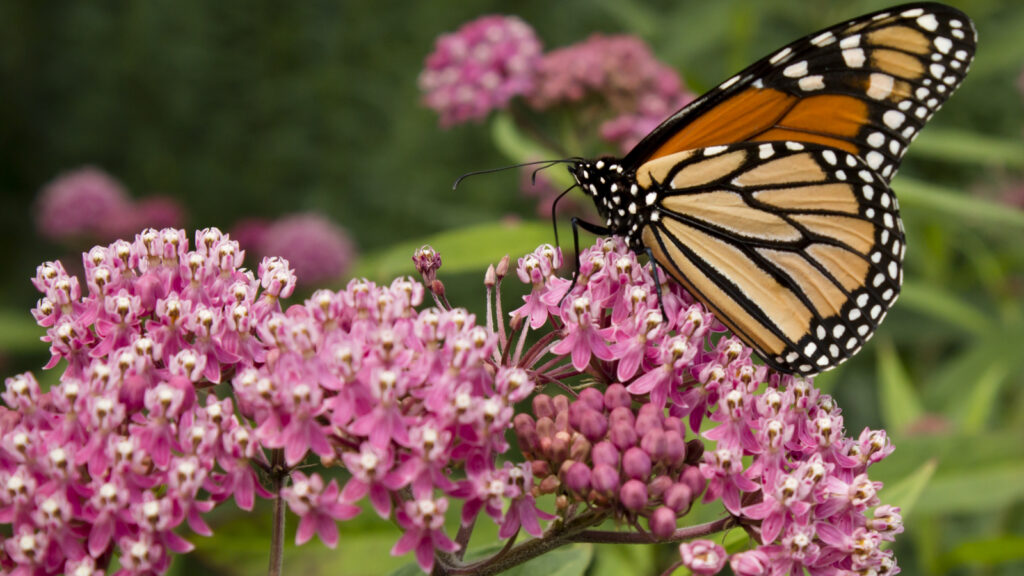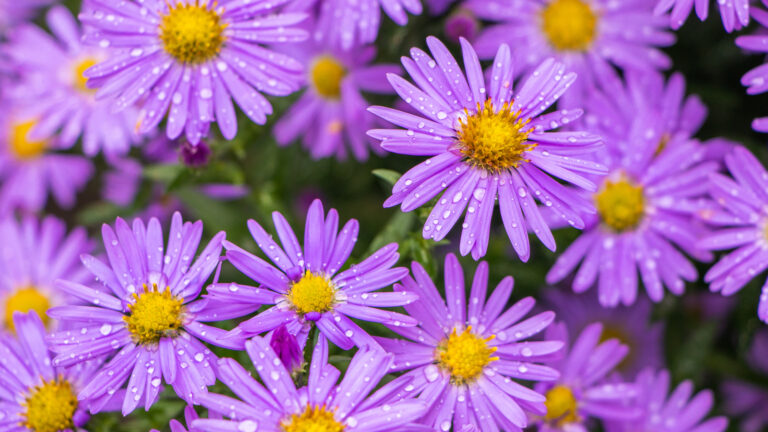This post may contain affiliate links.
California is home to a rich variety of native plants, with nearly 6,000 species thriving across its diverse climates. From the dry deserts to the cool coastal areas and rugged mountains, these plants are well-adapted to their environments.
Here’s a list of 24 native plants you can include in your garden.
1. California Milkweed

A perennial, drought-resistant flower with thick, white, hairy stems that enhance garden aesthetics. It blooms in summer and spring, producing flowers in shades of lilac, white, bright pink, or
2. Common Yarrow

Known also as nosebleed plant or devil’s nettle, this member of the
3. California Fuchsia

This low-growing, fire-resistant perennial features trumpet-shaped flowers and blooms in summer. It’s known for attracting hummingbirds and prefers full sun and sandy, clay, or serpentine soils. It grows up to 2 feet tall and 3 feet wide. Ideal for zones 8 to 11.
4. Blue-eyed grass

This perennial produces blue to purple flowers. It requires supplemental watering in summer to prevent dormancy. It is low-maintenance, tolerates various soil types, and prefers full sunlight to partial shade. It reaches up to 2 feet, 3 inches in height and is suitable for USDA zones 4 to 9.
5. Beardtongue

Also known as Penstemon, this plant produces showy, long-lasting flowers with a distinctive pollen-free stamen. It thrives in poor, rocky soils with good drainage and full sun and requires weekly watering in summer. It can grow up to 4 feet high and USDA hardiness zones range between 3 and 9.
6. California Poppy

This brightly colored perennial flower is loved for its orange, yellow, and golden blossoms. It is low-maintenance and does not require fertilizer application. It is drought-tolerant, prefers exposure to full sunlight and well-draining sand soils, and matures up to 18 inches tall and 24 inches wide. USDA hardiness zones range from 8 to 10.
7. Island Alum Root

Also known as Jill-of-the-roots, it has tiny pink flowers that usually bloom in spring. It prefers exposure to full sunlight, has low maintenance needs and well-draining sandy soils. It is a perennial flower that grows up to 2 feet tall and requires infrequent watering unless in summer. Zones 8 to 11.
8. Salvia

Salvia is highly tolerant to drought and heat. It produces narrow flower spikes in shades of pink, red, white, blue, and purple. It attracts insect pollinators to your garden and does well in hot and dry climates. It thrives in full sun and well-draining and slightly acidic soils. It can mature up to 5 feet tall. Zones 7 to 11.
9. Mountain Violet

Despite its name, it produces bright yellow flowers in spring. This drought-tolerant perennial does well under full sun and in sandy or silt soils. It grows up to 12 inches tall in USDA zones 6 to 9.
10. Baby Blue Eyes

Baby Blue Eyes is a low-growing, blue-flowered plant that spreads and has succulent stems. It is drought-resistant, prefers full sun, and grows in sandy or loam soils. It reaches up to 6 inches tall and 12 inches wide, suitable for USDA zones 7 to 10.
11. Squaw Carpet

An evergreen ground cover with a purple-blue hue, this perennial prefers full sunlight and moderate watering, increasing slightly in summer. It thrives in well-drained loam or sandy soils and grows up to 6 inches high and 8 inches wide, suitable for USDA zones 6 to 9.
12. Mountain Mint

Also called Sierra mint, it is the only Pycnanthemum species native to California. It grows rampantly and, if not contained well, can die back to the soil surface in winter. It prefers partial shade, moistened soils that are well-draining, and matures up to 3 feet tall and wide. USDA hardiness zones range from 6 to 9.
13. Dutchman’s Pipe Vine

This vine is known for its unpleasant scent, which attracts insects. It tolerates most soil types, prefers partial shade, and requires minimal watering. It can grow over 20 feet long and is suitable for USDA zones 7 to 10.
14. Common Manzanita

An evergreen shrub with gnarled branches and delicate white flowers, it is adaptable to various soils and requires infrequent watering. It thrives in full sunlight and can grow up to 20 feet tall and 10 feet wide, suitable for USDA zones 8 to 10.
15. Coffeeberry

Resembling coffee beans, the seeds of this evergreen shrub grow up to 15 feet tall and wide. It adapts to various soil types and requires bimonthly watering once established. It thrives in full sun, suitable for USDA zones 7 to 9.
16. Bush Monkey Flower

Known for its sticky, dark green leaves, this shrub benefits from frequent deadheading to encourage blooming. It thrives in well-draining sand, clay, or loam soils, prefers full sunlight, and can grow up to 5 feet high. It is suitable for USDA zones 7 to 11.
17. Bush Anemone

This evergreen member of the hydrangea family, bush anemone, produces white flowers with a yellow center. It grows well in full sunlight in a variety of soils, has low water needs, and can grow up to 10 feet tall in USDA hardiness zones 8 to 9.
18. Round-fruited sedge

Round-fruited sedge grows in the coastal woodlands of California and prefers moist soils. It displays small, round, green fruits and green-brown spikelets early in the season. It prefers partial shade and well-drained but slightly acidic soils and grows to 3 feet tall in USDA hardiness zones 3 to 9.
19. Pacific Rush

Commonly referred to as bog rush or soft rush, the Pacific rush is a wetland perennial that grows well in moist soils. Its yellowish-green to light brown flowers make it a perfect addition to your garden. It thrives well in slightly acidic to neutral soils with partial sunlight exposure. It can grow to 4 feet tall in USDA hardiness zones 4 to 9.
20. Giant Wild Rye

This species forms large clumps of silver-green foliage and tolerates drought, preferring moist soils and full sunlight. It can be pruned if it becomes floppy and grows up to 4 feet tall, suitable for USDA zones 6 to 10.
21. Deer grass

Deer grass is known for its light green to purple blades and tall flower stems that appear in spring. It prefers well-drained soils and full sunlight, tolerating drought. It can grow to 4 feet tall and 5 feet wide, suitable for USDA zones 7 to 10.
22. Morning glory

Morning glory is a fast-growing climbing vine that can grow up to 10 feet tall and wide in a short time. It produces pinkish-white flowers that darken to deep shades of
23. Pacific Pea

Pacific pea is an evergreen vine that grows well in damp forests and woodlands. Its flowers range from bright violet to pale purple or white. This fast-growing vine usually climbs on trellises and fences, growing up to 8 feet tall. It prefers sand or clay loam soils that have good drainage, infrequent watering, and full sunlight exposure in USDA hardiness zones ranging from 8 to 10.
24. Valley Oak

A large deciduous tree that can grow up to 100 feet tall. It thrives in deep, fertile, well-draining soils under full sunlight. Suitable for larger landscapes and grows in USDA zones 7 to 11.
Purity Wamoyi
Purity Wamoyi is a horticulturist. She studied BSc Horticulture at the University of Nairobi. She has a passion for agriculture driven by her urge to be a champion and ambassador in fighting for food security.She believes that the world would be a better place if we did the little things that bring peace and uphold humanity. During her free time, Purity loves watching soccer and is a huge ardent Chelsea fan.







